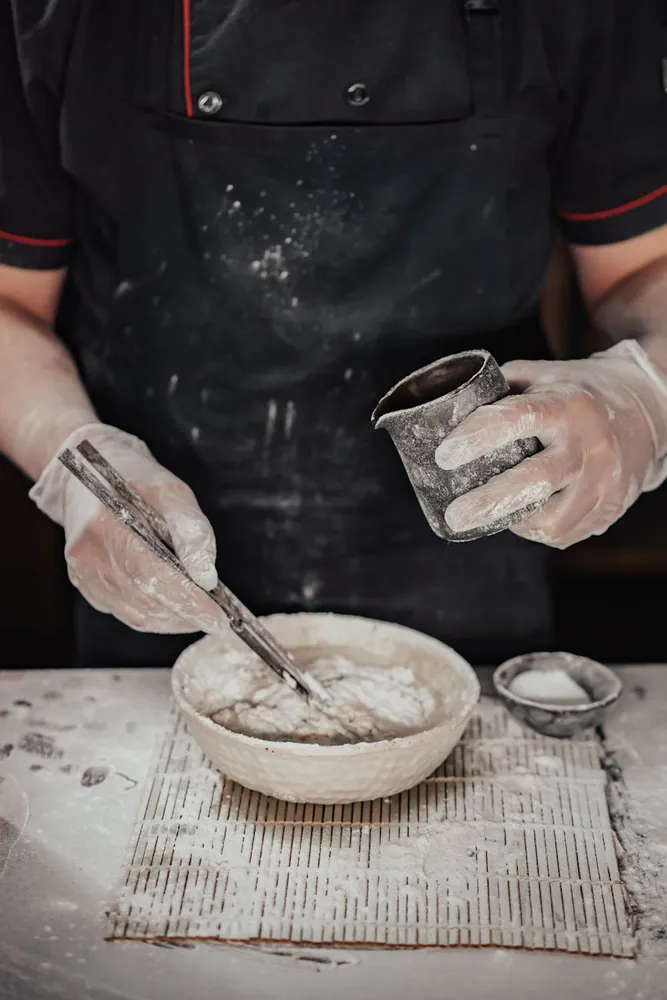Mastering Sauerkraut: Key Techniques for Flavorful Fermentation at Home

The Art of Sauerkraut Making
Sauerkraut, a staple in many cuisines, offers not just a tangy crunch but also a rich history of fermentation. While seemingly simple, achieving the perfect sauerkraut requires an understanding of the fermentation process and attention to detail.
Understanding Fermentation
Fermentation is a metabolic process that converts sugar into acids, gases, or alcohol. In the case of sauerkraut, lactic acid bacteria ferment the sugars in cabbage, producing lactic acid which acts as a preservative.
Choosing the Right Cabbage
The quality of your cabbage will directly affect the final product. Opt for fresh, organic cabbage if possible. Look for heads that are heavy for their size and have tight, crisp leaves. Avoid cabbages with wilted or discolored leaves.
- Tip: Green cabbage is most commonly used, but red cabbage can add a vibrant color and slightly different flavor profile.
The Role of Salt
Salt is essential in sauerkraut making. It draws water out of the cabbage, creating a brine that preserves the vegetable and inhibits the growth of harmful bacteria.
Salt Ratio
A standard guideline is to use about 2% salt by weight of the cabbage. Weigh your cabbage and calculate the appropriate amount of salt. For example, for 1kg (1000g) of cabbage, use 20g of salt.
Types of Salt
Use non-iodized salt such as sea salt or kosher salt. Iodine can inhibit fermentation and impact flavor. Ensure your salt is free from anti-caking agents.
Equipment Essentials
A successful fermentation process depends on using the right tools:
- Knife and Cutting Board: Essential for shredding the cabbage finely.
- Bowl: To mix cabbage with salt.
- Fermentation Vessel: A clean glass jar or ceramic crock. Ensure it's large enough to accommodate expansion.
- Weights: Use glass weights or food-safe items to keep cabbage submerged in brine.
- Cover: A cloth cover or airlock lid to allow gases to escape while preventing contamination.
The Fermentation Process
Step-by-Step Guide
- Shred the Cabbage: Cut the cabbage into thin slices using a sharp knife or mandoline.
- Add Salt: Place shredded cabbage in a large bowl, sprinkle with calculated salt, and massage until it releases liquid.
- Pack into Vessel: Transfer cabbage into your fermentation vessel, pressing down firmly to eliminate air pockets.
- Add Weights: Place weights on top to keep the cabbage submerged under the brine.
- Cover and Store: Cover with a cloth or an airlock lid. Store at room temperature away from direct sunlight.
Monitoring Progress
Fermentation time varies depending on temperature and desired flavor. Generally, it takes 1 to 4 weeks. Check daily, ensuring cabbage remains submerged. Taste periodically after the first week.
- Tip: Cooler temperatures slow fermentation, while warmer speeds it up. Aim for a consistent environment around 65°F to 72°F (18°C to 22°C).
Troubleshooting Common Issues
Mold Growth
If mold appears on the surface, it’s usually harmless and can be removed. Make sure the cabbage remains submerged.
No Tangy Flavor
If your sauerkraut lacks tanginess, it may need more time. Ensure temperature conditions are optimal and consider increasing fermentation duration.
Enhancing Your Sauerkraut
Adding Flavors
Once you’ve mastered basic sauerkraut, experiment with flavors like caraway seeds, juniper berries, garlic, ginger, or even chili flakes for heat.
- Add flavoring ingredients before massaging the cabbage with salt.
Storage
Once fermented to your liking, store sauerkraut in the refrigerator to slow fermentation and preserve texture and flavor. It will keep for several months.
A Final Word on Fermentation
The beauty of sauerkraut lies in its simplicity and tradition. With practice and patience, you can craft batches tailored to your taste preferences. Remember that each batch may vary slightly—embrace these nuances as part of the artisanal process of fermentation.
